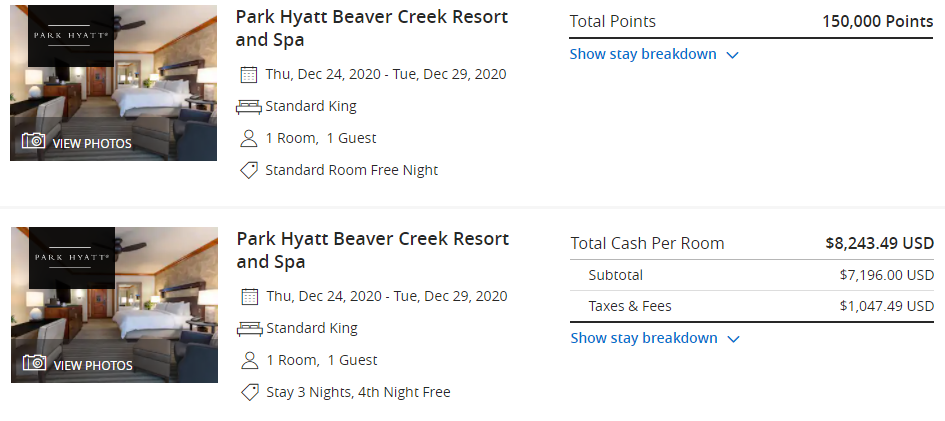The Chase Sapphire Preferred and Freedom Flex both come with 80,000 point bonuses — which is better?
Signing up for credit cards through partner links earns us a commission. Terms apply to the offers listed on this page. Here’s our full advertising policy: How we make money.
Update: One or more card offers in this post are no longer available. Check our Hot Deals for the latest offers.
Chase has been making all kinds of improvements to their travel credit cards. One of these featured changes is their increased sign-up bonuses available with the Chase Sapphire Preferred® Card and the Chase Freedom lineup, such as the Chase Freedom Flex℠. Both cards offer up to 80,000 points as part of their intro offers, though one is easier and faster to achieve than the other.
Both card bonuses have unique merits — so which one is best for you?

Battle of bonuses — Chase Sapphire Preferred vs Chase Freedom Flex
Here’s what you’ll get with each card:
- The Chase Sapphire Preferred® Card comes with 80,000 Chase points after you spend $4,000 on purchases in the first three months from account opening
- The Chase Freedom Flex℠ comes with a $200 cash bonus (20,000 Chase points) after you spend $500 on purchases in your first three months from account opening. It also comes with 5% cash back (5x Chase points) on grocery store purchases (not including Target or Walmart purchases) on up to $12,000 spent in the first year
It’s important to note that while the Chase Freedom Flex is marketed as a cash back card, it actually earns Chase Ultimate Rewards points. However, you’ll need a transferrable points-earning card (all of which come with an annual fee) to unlock their full potential. Both the Chase Sapphire Preferred® Card and the Chase Sapphire Reserve® allow you to transfer points to travel partners or book through the Chase travel portal at better rates. Read our post on the best ways to use Chase points for more details.
Which bonus should you get?
So, the Chase Sapphire Preferred offers you a huge chunk of Chase points after meeting a manageable spending requirement within three months. The Chase Freedom Flex gives you a comparatively meager 20,000 Chase points.
But there’s another part to the Freedom Flex intro offer: You’ll earn 5% back (5x point) on the first $12,000 you spend at grocery stores for the first 12 months you have the card. Spend $12,000, and you’ll have another 60,000 points. And while $12,000 is definitely a lot to spend on groceries, especially for a small family (my wife and I spend about half that), remember that you can buy all kinds of gift cards at grocery stores (like for Amazon, gas stations, Apple, Starbucks, Airbnb and even plain old Visa gift cards). Using this method will give you the opportunity to effectively earn 5x points at other merchants besides grocery stores.
If you’re in a hurry for Chase points, you’ll want to go the way of the Chase Sapphire Preferred. Just keep in mind that it’ll cost you a $95 annual fee (totally worth it by the way, read my Chase Sapphire Preferred review to understand why). The fact that the Chase Freedom Flex is a no annual fee credit card that has the same potential bonus as the Chase Sapphire Preferred is unignorable, however. Read our Chase Freedom Flex review for all the details of that card.
Are you eligible?
Both of these cards are restricted by the Chase “5/24 rule.” If you’ve opened five or more cards from any bank (not counting certain business credit cards) in the past 24 months, Chase will not approve you for most of their cards. If this describes you, take a look at our best travel credit cards page for other cards, many of which are offering large welcome bonuses.
Also, Chase has a stipulation that you cannot receive a bonus on a Chase Sapphire card if you’ve earned a Sapphire bonus in the past 48 months. If you’ve earned a Chase Sapphire bonus within the last four years, go for the Chase Freedom Flex instead. You can amass tens of thousands of points with this card, and perhaps open the Chase Sapphire Preferred later.
Or, alternately, open the Ink Business Preferred® Credit Card — this card is one that can also unlock the power Chase points — allowing you to transfer them to travel partners like Hyatt, United, British Airways and more. The Ink currently has a great sign-up offer of its own: earn 100,000 points after spending $15,000 in the first three months of account opening.
Verdict: Get both
Yeah. If you’re eligible for both cards, there is zero reason not to open both. There are a few strategic ways you can go about this:
- You can open the Chase Sapphire Preferred, and then open the Chase Freedom Flex a month or two later. You’ll likely have better odds of being approved for both if you put some time between applications. Data points suggest that you won’t be approved for more than two Chase personal cards in 30 days.
- You can wait until you earn the Chase Sapphire Preferred bonus and then open the Chase Freedom Flex. It may be simpler to conquer the card bonuses one at a time.
- You and a partner can both open one card on the same day, ensuring you lock-in the current bonuses before they disappear (which sometimes happens overnight).
If you can meet these spending requirements and swing $12,000 on groceries in a year, you can count on 160,000 Chase points in your account in the next 12-14 months. That is a lot of Chase points. You could simply cash those points out for a $1,600 pile of money. Pretty great for just the price of one $95 annual fee!
But remember, we value Chase points at 1.7 cents each. This makes your 160,000 points worth $2,720 in travel on average — and it’s not difficult to get significantly more value from them if you’ve studied our post on the best ways to use Chase points. For example, you could transfer your points to Hyatt for a ski vacation at the Park Hyatt Beaver Creek. A five-night stay over Christmas costs 150,000 points (10,000 points less than you’d have). But you’d need to spend $8,200+ if you used cash!

Imagine saving $8,200 just by earning the bonuses with one no-annual-fee card and one $95 annual fee card. It’s totally doable.
Bottom line
If you have to choose one, I’d definitely go for the Chase Sapphire Preferred bonus. It’s easier and faster to earn. Plus, you can transfer the points to valuable airline and hotel programs for amazing value.
If you don’t already have a Chase Ultimate Rewards earning credit card that has an annual fee, the Chase Freedom Flex is just a really, really good cash back card. If you do already have one of these cards, the Chase Freedom Flex is a perfect complement. You should have both the Chase Sapphire Preferred and Chase Freedom Flex in your wallet. Since they both have unprecedented bonuses, open them both if you can.
Let us know if you plan to open one (or both) of these cards! And subscribe to our newsletter for more miles and points strategies delivered to your inbox once per day.
Editorial Note: We're the Million Mile Secrets team. And we're proud of our content, opinions and analysis, and of our reader's comments. These haven’t been reviewed, approved or endorsed by any of the airlines, hotels, or credit card issuers which we often write about. And that’s just how we like it! :)






Join the Discussion!